Seed Mixes
Table of Contents
Take advantage of prairie diversity
Native seed mixes for roadsides must include species adapted to various growing conditions, from wet to mesic to dry. In order for the native plants to outcompete weeds, mixes should also include species that occupy different ecological niches, grass and broadleaf species, warm-season and cool-season species, plants that are tall enough that they produce shade that prevents weeds from growing, and small plants to fill in underneath.
When planting in narrow ditches, such as those found within a right-of-way that is 66 feet wide, it is most efficient to design one seed mix that includes species for a wide range of site conditions—from the gravelly, well-drained soils at the top of the slope, to the heavy, saturated soils at the bottom of the ditch. The same mix can be applied over the entire area and left to sort itself out. Wider rights-of-way may have larger wet or dry areas to justify designing and planting a seed mix specific to those spots.
To achieve a well-rounded seed mix with all the benefits of native vegetation, include species from each functional group described below.
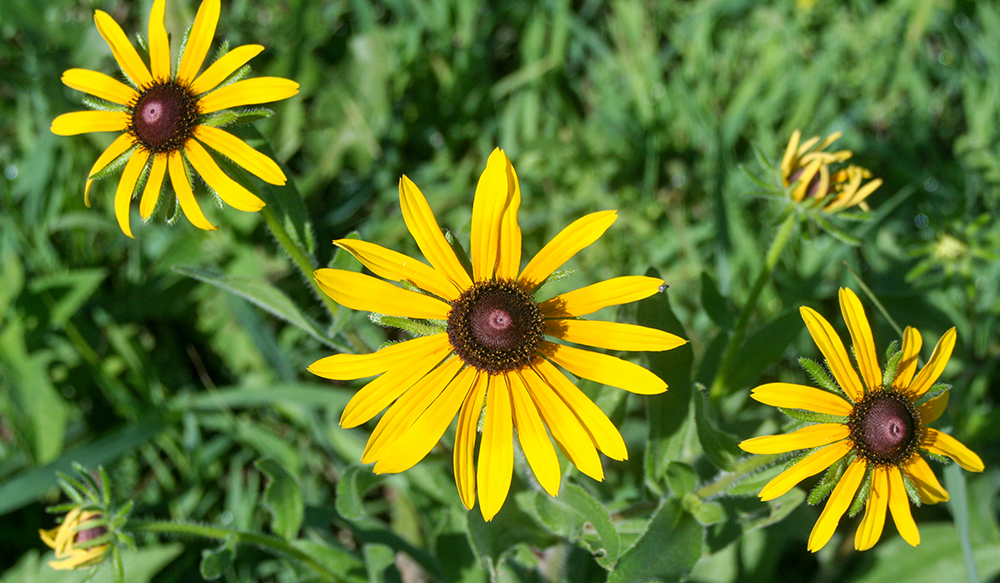
Quick-Establishing
These native species establish faster than others, provide early erosion control, and show demonstrable progress to community members while slower species take longer to establish.
- Canada wildrye (Elymus canadensis)
- Black-eyed Susan (Rudbeckia hirta)
- Rough dropseed (Sporobolus compositus)
- Partridge pea (Chamaecrista fasciculata)
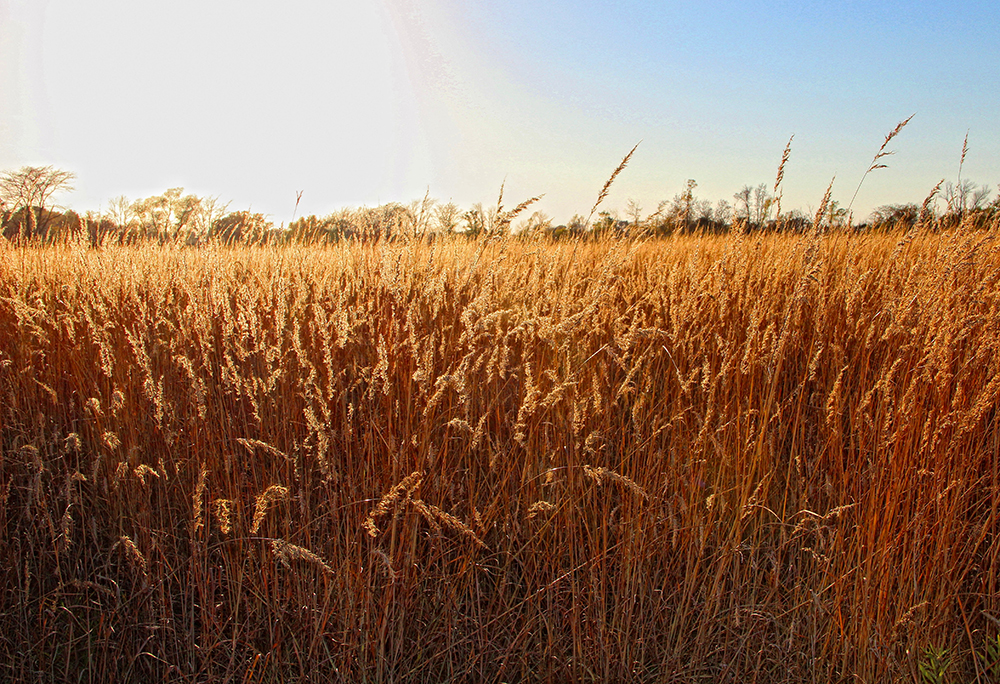
Warm-Season Grasses
Roadside plantings rely heavily on these prominent members of the native plant community. These grasses continue to grow through the hot summer months. They provide long-term erosion control and good fall color.
- Big bluestem (Andropogon gerardii)
- Indiangrass (Sorghastrum nutans)
- Switchgrass (Panicum virgatum)
- Sideoats grama (Bouteloua curtipendula)
Cool-Season Species
Roadside plantings are strengthened by a species component that greens up early in the spring. These plants provide late winter/early spring erosion control and occupy the niche sought by non-native, cool-season competitors like smooth brome.
- Canada wildrye (Elymus canadensis)
- Virginia wildrye (Elymus virginicus)
- Western wheatgrass (Pascopyrum smithii, also known as Agropyron smithii and other alternate names)
- Sedges (Carex spp.; “spp.” means “several species” in scientific terminology. One to four sedge species may be included in the seed mix depending on which sedge species are available.)
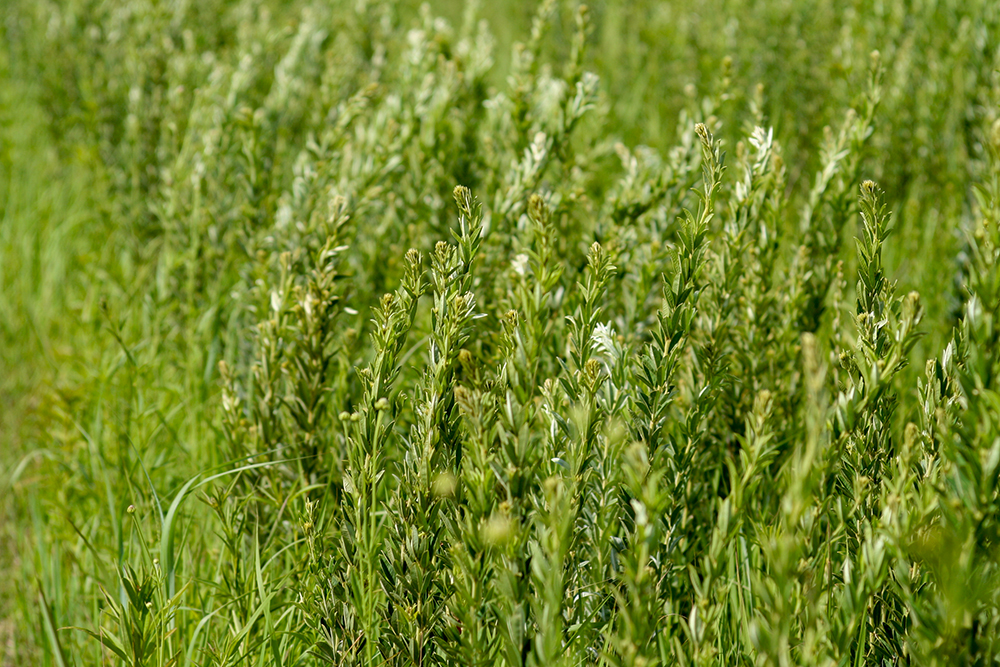
Legumes
The prairie flora includes many legumes that thrive in roadside plantings. They fix nitrogen, or in other words, with the help of bacteria that grow on their roots, they convert atmospheric nitrogen gas that plants cannot use into a usable form of nitrogen, such as nitrate, that plants can use to grow. When legumes die and decompose, the nitrogen in their root and leaf tissue is released into the soil. By making nitrogen more readily available in the soil to various plant species, legumes improve growing conditions for many different types of plants.
- White wild indigo (Baptisia alba)
- Round-headed bush clover (Lespedeza capitata)
- Showy tick-trefoil (Desmodium canadense)
- Canada milkvetch (Astragalus canadensis)
- Purple prairie clover (Dalea purpurea)
Showy and Easy
These crowd pleasers establish readily, are relatively inexpensive, and create masses of color noticeable to residents swiftly driving by.
- Gray-headed coneflower (Ratibida pinnata)
- Oxeye sunflower (Heliopsis helianthoides)
- Wild bergamot (Monarda fistulosa)
- New England aster (Symphyotrichum novae-angliae)
- Black-eyed Susan (Rudbeckia hirta)

Showy
The following species cost a little more or are harder to establish but still add important color and habitat.
- Butterfly milkweed (Asclepias tuberosa)
- Prairie blazing star (Liatris pycnostachya)
- Compass plant (Silphium laciniatum)
- Pale purple coneflower (Echinacea pallida)
- Stiff goldenrod (Oligoneuron rigidum)
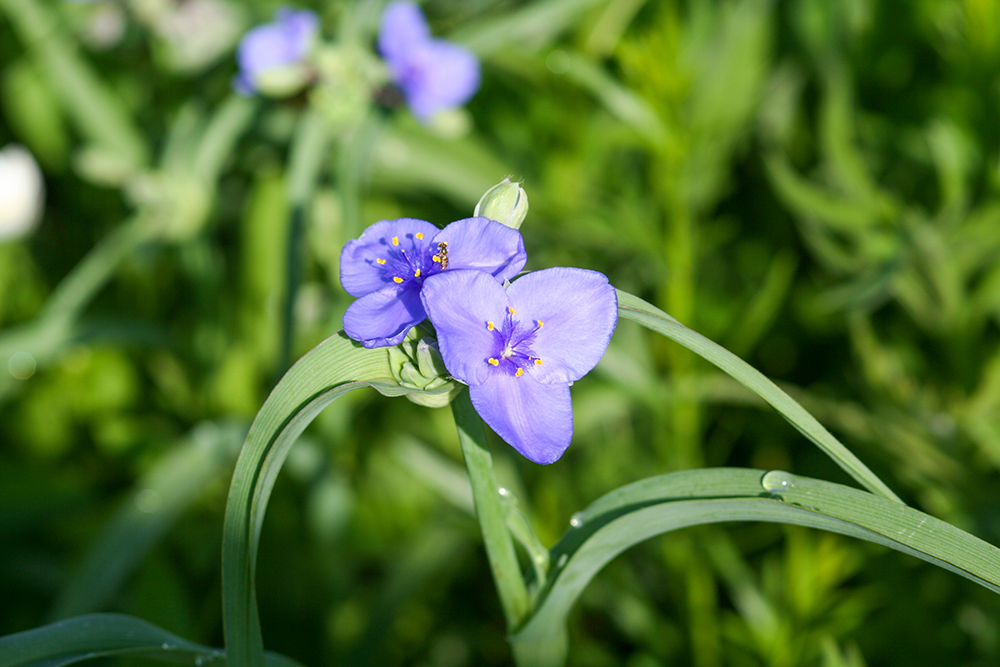
Early Bloomers
Extending a planting’s blooming season into the fall is relatively easy, but spring color is harder to come by. The following plants provide the earliest color visible from the road.
- Ohio spiderwort (Tradescantia ohiensis)
- Foxglove beardtongue (Penstemon digitalis)
- Golden Alexanders (Zizia aurea)
- Large-flowered beardtongue (Penstemon grandiflorus)
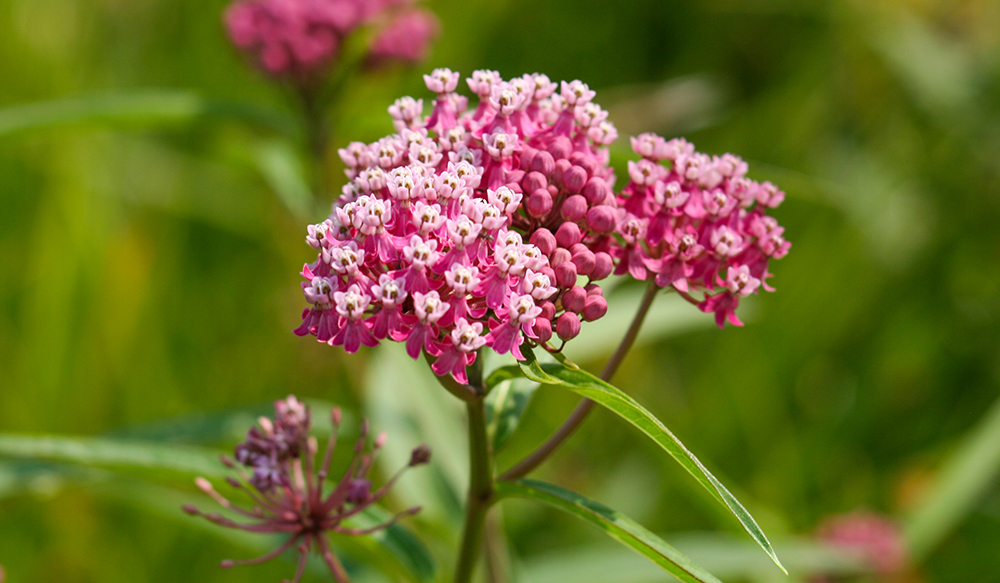
Wet Species
Upland species that are adapted to dry (xeric) or moderate soil moisture (mesic) conditions dominate roadside seeding mixes to reflect the growing conditions along the upper and middle part of the ditch. Species adapted to wet areas are needed for moist ditch bottoms.
- Bluejoint grass (Calamagrostis canadensis)
- Swamp milkweed (Asclepias incarnata)
- Dark green bulrush (Scirpus atrovirens)
- Sneezeweed (Helenium autumnale)
- Mountain mint (Pycnanthemum virginianum)
For additional assistance with designing seed mixes, see the Tallgrass Prairie Center’s Designing Seed Mixes technical guide and seed calculator.
A Note About Tall Grasses and Non-Native Perennials
For visibility and safety, tall grasses—such as big bluestem and Indiangrass—should not be planted at intersections or driveways. However, omitting these grasses from other roadside areas will limit a planting’s adaptability. Big bluestem and Indiangrass are versatile and adapted to conditions from medium-dry to medium-wet. Short native grasses, on the other hand, are generally adapted only to dry sites.
Non-native perennials—such as tall fescue, perennial ryegrass, crown vetch, and birdsfoot trefoil—are very competitive and will persist to the point of adversely affecting the survival of native seedlings. These species should not be used in permanent or temporary mixes for native plantings.
Seed Mixes for Shoulders
Native species are not to be planted on the shoulder. Seed mixes that withstand repeated mowing and are well-suited to shoulder conditions include:
- 50% Kentucky 31 fescue (note: this is a tall fescue that is distinct from Kentucky bluegrass) and 50% perennial rye
- 45% Kentucky 31 fescue, 45% perennial rye, 6% medium red clover, and 4% alsike clover
- 35% fawn tall fescue, 35% perennial rye, 20% Timothy, and 10% alfalfa or hairy vetch
Roadside Real Talk
Insights from Roadside Managers and Other Professionals
Keep in mind, in most situations, we’re not recreating a diverse prairie. We’re stabilizing the roadside with native plants.
We use local ecotype hand-harvested forbs and combined seed from our native seed nurseries to add diversity to our roadside seed mixes.
Try to tailor your mix so the right-of-way has color all year long.
—Joe Kooiker, Story County, 2024
Aspect and shading sometimes need to be taken into account, especially on small plantings or problem areas. In shaded areas, we use savanna species in the mix. If there’s a lot of shade, we may plant a non-native, cool-season mix.
Depending on soil type, we may use up to one-and-a-half times the rate of native seed to help speed establishment and stabilization.
—Jim Uthe and James Devig, Dallas County, 2024


